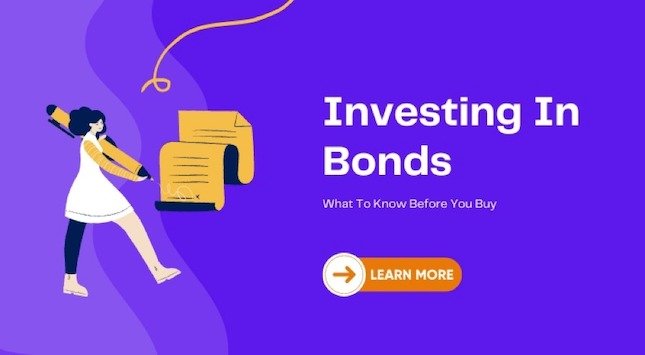
Investing in bonds is a popular way to provide financial stability and earn a steady income. But what happens if the bond issuer defaults? You may be left with an uninsured investment that has lost value. In this article, we will explore how you can protect your investment by diversifying your holdings – including bonds – and investing in other investments like stocks, ETFs, and mutual funds.
What are Bonds
Bonds are debt securities that represent a loan made by an investor to a borrower, typically issued by a corporation, government, or municipality. The borrower agrees to pay back the loan over a set period of time, known as the bond’s term, and to make periodic interest payments to the investor during that time.
At maturity, the bondholder receives back the full value of the bond. If interest rates have risen since the bond was originally issued, the bond may be sold before maturity at a profit. Conversely, if interest rates have fallen, the bond may be sold at a loss.
Bonds are often used by investors seeking stability and income. Because bonds typically offer lower returns than stocks, they are often considered less risky investments. However, bonds can still lose value if interest rates rise or the issuer experiences financial difficulties.
As with any investment decision, it is important to carefully consider your goals and risk tolerance before investing in bonds.
Why Invest in Bonds?
When it comes to investing, bonds are often overlooked in favor of stocks. However, bonds can be a valuable addition to any investment portfolio. Here are some reasons why you should consider investing in bonds:
- Bonds provide stability. Unlike stocks, which can be volatile, bonds tend to be much more stable. This makes them ideal for investors who are looking for a way to protect their capital.
- Bonds offer consistent returns. While stock prices can fluctuate wildly, bonds typically offer more predictable and consistent returns. This makes them ideal for investors who are looking to generate income from their investments.
- Bonds can act as a hedge against inflation. Over time, the value of bonds tends to increase at a rate that outpaces inflation. This makes them an ideal investment for those who are concerned about the effects of inflation on their portfolios.
- Bond interest is often tax-exempt. The interest earned on most bonds is exempt from federal taxes, and may also be exempt from state and local taxes depending on the type of bond and where it is issued. This can make bonds an attractive investment for those who are looking to minimize their tax liability
The Pros and Cons of Bonds
Bonds are often considered to be a safe investment, but there are some risks involved that investors should be aware of. Here are some of the pros and cons of investing in bonds:
Pros
- Bonds tend to be less volatile than stocks, so they can provide stability for an investment portfolio.
- Interest payments from bonds can provide a source of income.
- Bonds can be a good diversification tool since they often perform differently than stocks.
Cons
- The interest payments from bonds may not keep up with inflation over time.
- Bonds are subject to interest rate risk, which means that bond prices will fall if interest rates rise. This is because when rates go up, new bonds are issued at the higher rate, making older bonds with lower rates less attractive to investors.
How to Invest in Bonds
Bonds are one of the most popular investments, and for good reason. They offer a safe and relatively stable way to earn income, while also providing some diversification for your portfolio. But before you start buying bonds, there are a few things you need to know.
Here’s a quick rundown of everything you need to know about investing in bonds:
What Are Bonds?
Bonds are essentially loans that investors make to governments or corporations. The borrower agrees to pay back the loan, with interest, over a set period of time.
Types of Bonds
There are many different types of bonds, but the two main categories are government bonds and corporate bonds. Government bonds are issued by national governments and are considered very safe investments. Corporate bonds are issued by companies and carry more risk, but also offer higher returns.
How Do I Buy Bonds?
You can buy bonds directly from the issuing government or company, or through a broker. Brokers will typically charge a commission fee, so it’s important to compare rates before making a purchase. You can also buy bonds through mutual funds or exchange-traded funds (ETFs), which can offer diversification and professional management at a lower cost than buying individual bonds.
Calculating Bond Yields
Bond yield is a measure of the return on investment for a bond, and is calculated by dividing the annual interest payment by the bond’s face value. For example, if a bond has a face value of $1,000 and an annual interest payment of $50, the bond’s yield would be 5%.
There are several different ways to calculate bond yield, and the method used will depend on the type of bond being purchased. For example, government bonds typically use a different calculation than corporate bonds.
When calculating bond yield, it’s important to remember that yields can change over time. This is due to changes in interest rates, as well as changes in the market price of the bond. For example, if interest rates go up, the price of a bond will usually go down, and vice versa.
It’s also important to remember that yields are not guaranteed. This means that there’s always a risk that you could lose money if you invest in bonds. However, if you’re looking for a safe investment with potential for income, bonds may be a good option for you.
What to Look for when Purchasing a Bond
When you purchase a bond, you are lending money to a company, municipality, or other entity. In return, the borrower agrees to pay you periodic interest payments and to repay the face value of the bond when it matures.
To make sure you’re getting a good deal on your investment, there are a few things you should look for:
- A competitive interest rate: This is the amount of interest you will earn on your investment. Be sure to compare rates from different issuers before investing.
- A solid credit rating: This is a measure of the issuer’s ability to repay its debt obligations. The higher the rating, the better.
- A reasonable maturity date: This is the date on which the issuer will repay the face value of the bond. longer-term bonds tend to offer higher interest rates than shorter-term bonds, but they also carry more risk. Choose a maturity date that meets your needs and objectives.
- Call provisions: Some bonds can be “called” by the issuer before they mature. This means that you may not receive all of your interest payments or may have to accept a lower interest rate if the bond is refinanced at a lower rate. Be sure to ask about call provisions before investing in any bond.
Conclusion
There’s a lot to learn when it comes to investing in bonds, but we hope this article has given you a good foundation. Bonds can be a great way to diversify your portfolio and earn some extra income, but they’re not without risk. Make sure you do your research before investing, and always consult with a financial advisor if you have any questions.





